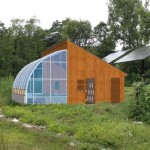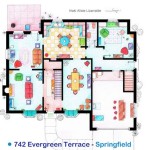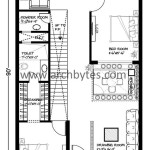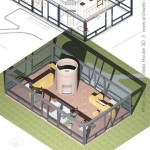Interior Design With House Plants
Integrating house plants into interior design goes beyond simply adding greenery. Plants contribute to a space's aesthetic, improve air quality, and foster a sense of well-being. Thoughtful placement, species selection, and container choices are crucial elements for effectively incorporating plants into the overall design scheme.
Key Considerations for Plant Selection
Choosing the right plants is fundamental to success. Considerations include the available light, humidity levels, temperature fluctuations, and the overall style of the room. Matching a plant's needs to the environment ensures its health and longevity while maximizing its visual impact.
Light Requirements
Understanding a plant's light requirements is paramount. South-facing windows offer the most intense light, ideal for sun-loving species. East and west-facing windows provide moderate light, suitable for a wider range of plants. North-facing windows offer the lowest light levels, appropriate for shade-tolerant varieties. Artificial grow lights can supplement natural light where necessary.
Humidity and Temperature
Many houseplants originate from tropical or subtropical climates and thrive in humid environments. Grouping plants, using humidifiers, or placing plants on trays filled with pebbles and water can increase humidity levels. Maintaining consistent temperatures, avoiding drafts, and protecting plants from extreme temperature fluctuations are also essential for plant health.
Plant Size and Growth Habit
Consider the mature size and growth habit of the plant. A small space might benefit from compact, slow-growing varieties, while larger rooms can accommodate larger, more dramatic specimens. Vining plants can be trained on trellises or allowed to trail from hanging baskets, adding a vertical dimension to the room. Upright plants can create focal points or divide spaces.
Containers and Pots
The container chosen for a plant is an extension of the interior design. Pots should complement the plant, the surrounding furniture, and the overall aesthetic of the room. Materials like terracotta, ceramic, concrete, and metal offer various textures and colors. Ensuring proper drainage is essential to prevent root rot.
Placement and Arrangement
Strategic plant placement maximizes visual impact and contributes to the overall flow of the room. Consider using plants to create focal points, define spaces, or soften harsh architectural lines. Grouping plants together can create a miniature indoor garden, increasing humidity and visual interest. Shelves, windowsills, and hanging baskets offer versatile display options.
Integrating Plants with Existing Decor
Plants should seamlessly integrate with the existing decor. Consider the color palette of the room and choose plants with foliage that complements or contrasts with the existing colors. The texture of the plant's leaves can also add visual interest. For example, a sleek, modern space might benefit from plants with bold, architectural foliage, while a more traditional room might suit plants with softer, more delicate leaves.
Maintenance and Care
Creating a sustainable indoor garden requires understanding the specific needs of each plant. Regular watering, fertilizing, pruning, and pest control are essential for plant health. Developing a consistent care routine ensures the longevity and continued beauty of the plants, contributing to the overall aesthetic of the interior design.
Styling Tips for Enhanced Visual Appeal
Elevating the presentation of houseplants enhances their contribution to the interior design. Using decorative saucers, plant stands, and macrame hangers adds visual interest. Grouping plants of varying heights and textures creates dynamic displays. Regularly cleaning the leaves and removing dead foliage maintains a polished and vibrant look.
Benefits of Incorporating Plants
Beyond aesthetic appeal, plants offer numerous benefits. They improve indoor air quality by filtering pollutants and releasing oxygen. Studies have shown that plants positively impact mental well-being, reducing stress and promoting relaxation. The presence of nature indoors can create a calming and inviting atmosphere.
Creating Thematic Plant Displays
Thematic displays can add personality and further integrate plants into the design narrative. A collection of succulents in terracotta pots can evoke a desert landscape, while a grouping of tropical plants in vibrant containers can create a lush, jungle-inspired atmosphere. Thematic displays can also reflect personal interests and hobbies, further personalizing the space.

Plants In Interior Design How To Make Your Home Flourish Decorilla

Using Houseplants To Reboot Your Interior Design Greenstreet Gardens

How Interior Designers Use Plants To Nail The Latest Home Decor Trends

Houseplants In Interior Design Pamono Stories

Home Room Bedrooms Decor Ideas Interior Design Plants House

Top Interior Design Tips And Tricks For Using Plants In Your Home The Little Botanical

5 Reasons Why You Should Style Your Home With Plants Leaf Envy

How To Use Plants In Interior Design Time Saving Tips Recent Trends Jay Scotts Collection

Modern Forest Cabin Interior Full Of Exotic House Plants And Succulents Elegant Atmospheric Design Furniture Bean Bags Beautiful Architectural Rendering Stock Ilration Adobe

Improving Home Interiors With Indoor Plants Interior Gardens








